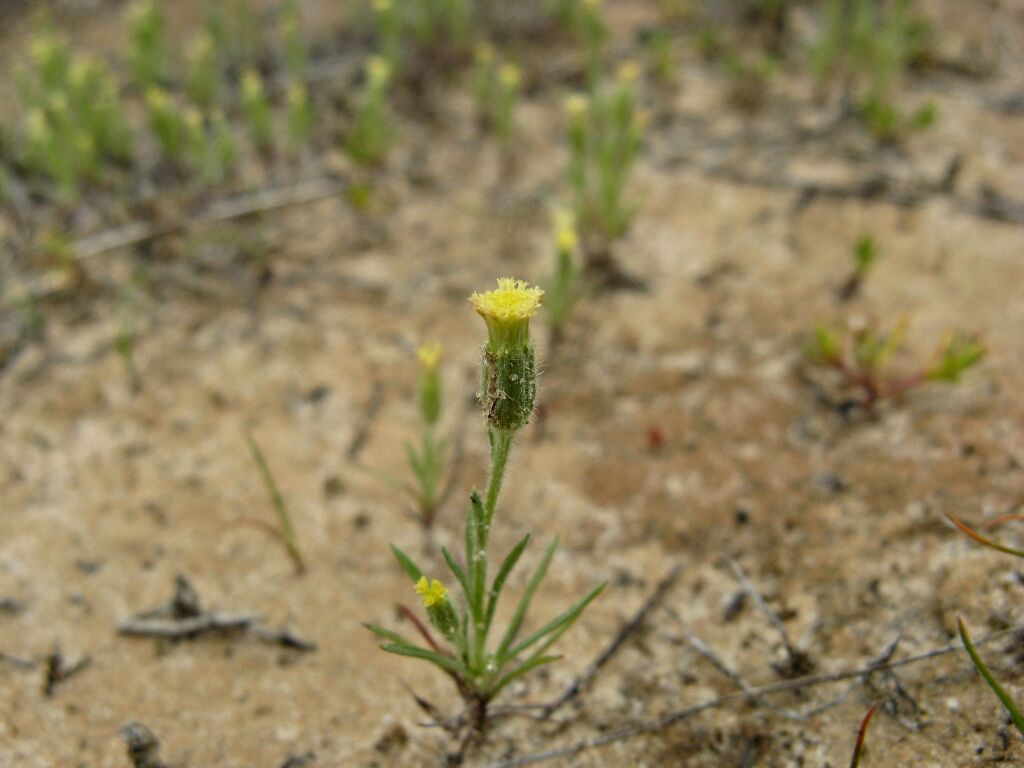Millotia tenuifolia var. tenuifolia
Soft MillotiaAscending to erect, simple or branched herb, to c. 15 cm high, with white, cottony hairs and stalked glandular hairs. Leaves linear or rarely oblanceolate, 5–25 mm long. Involucral bracts 5–20, uniseriate, free, narrowly elliptic, lanceolate or c. linear, 4–8 mm long, mainly herbaceous to mainly scarious (the scarious parts often purplish), with mixed stalked glandular and cottony hairs. Florets 5–65; corolla 3–5-lobed, mainly yellow, sometimes tinged purple; anthers 0.45–0.75 mm long. Cypselas gradually tapering to a beak, c. 3–6 mm long in all, smooth or papillate; beak c. straight, not dilated apically but obviously demarcated from corolla-tube; pappus bristles 17–30, barbellate, c. equal to or just exceeding corolla, rarely unequal with the longest c. two-thirds as long as corolla, or reduced to a ring of scales. Flowers Aug.–Nov.
LoM, MuM, Wim, GleP, VVP, VRiv, RobP, MuF, GipP, OtP, Gold, CVU, GGr, DunT, NIS, EGL, HSF, HNF. Widespread throughout much of the State in heathland, woodland and sclerophyll forest, usually on snady or light loamy soils.
The name Millotia tenuifolia var. nudescens has been applied to specimens with a reduced pappus, but formal recognition of this entity seems unjustified.
Short, P.S. (1999). Millotia. In: Walsh, N.G.; Entwisle, T.J., Flora of Victoria Vol. 4, Cornaceae to Asteraceae, pp. 726–729. Inkata Press, Melbourne.
 Spinning
Spinning

